If your computer is coming up with “There is Not Enough Memory to complete this operation”, you won’t be able to open the File, App or Desktop program that you were trying to open on your computer.
In most cases, this error message is being generated by the system, in respone to memory allocation request made by the computer to open a File, App, Desktop Program or the Web browser.
Not Enough Memory to Complete This Operation in Windows
If you are unable to an App, File or Desktop program on the computer due to “There is Not Enough Memory to complete this operation” error message, you should be able to fix the problem using the following troubleshooting steps.
1. Repair the App
Windows provides the option to repair apps, if they are not running properly and coming up with error messages.
1. Go to Settings > Apps > Apps & Features.
2. On the next screen, click on 3-dots icon located next to the App that is not opening and select Advanced options in the menu that appears.
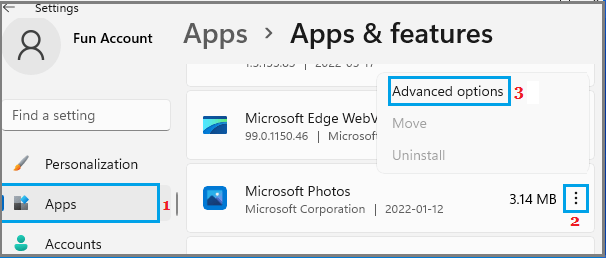
3. On the next screen, select the Repair option.
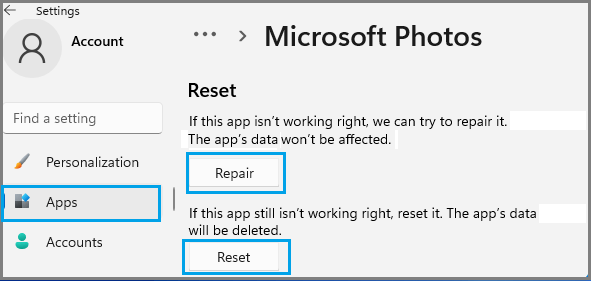
After this check to see if the App is working properly. If it is not, try the Reset option.
2. Update Windows
Make sure your computer is running the latest version of operating system and programs.
1. Go to Settings > Update & Security.
2. On the next screen, click on Download and Install now to install the available updates.
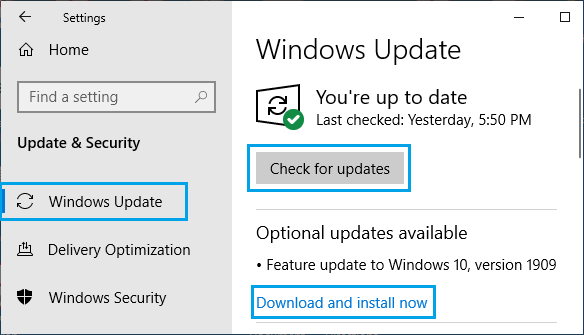
If Download option is not available, click on Check for Updates.
3. Update Device Drivers
Corrupted or incompatible device drivers can create high memory demand.
1. Right-click on the Start button and click on Device Manager.
2. On the Device Manager Screen, click on Action > Scan for hardware changes.
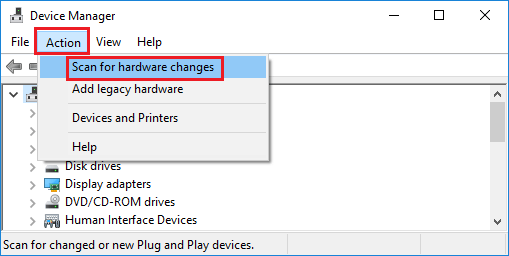
Windows will scan your computer for Hardware changes and update device drivers (if required).
4. Increase Virtual Memory
If your computer has a low RAM capacity, you can increase the size of virtual memory on your computer.
1. Right-click on the Start button and click on Run.
2. In the Run Command window, type SystemPropertiesAdvanced and click on OK.
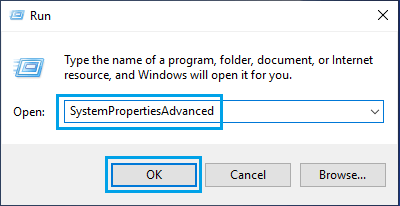
3. On System Properties screen, switch to Advanced tab and click on the Settings button, located under “Performance” section.
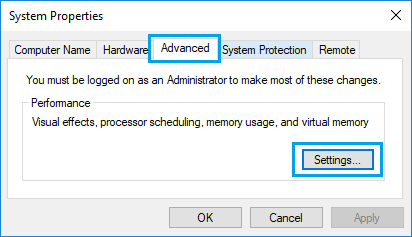
4. On Performance Options screen, go to Advanced tab and click on the Change button, located under “Virtual Memory” section.
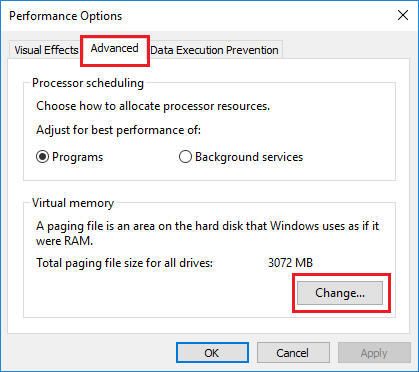
5. On the Virtual Memory screen, uncheck Automatically manage option, select your Hard Drive, select Custom size option, type your desired Initial size and Maximum Size values and click on the Set button.
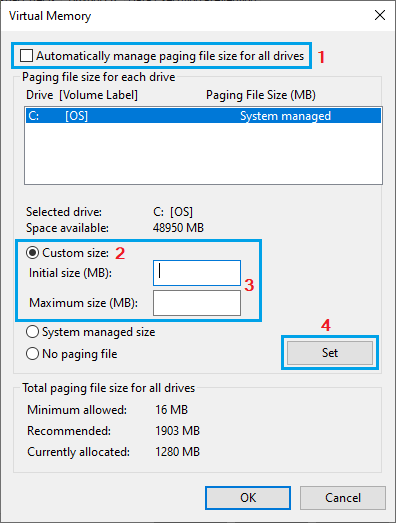
Note: You can set initial size to 1.5 times and maximum size to 3 times the available RAM on your computer.
Make sure you Restart the computer for above changes to be implemented.
5. Run SFC Scan
If your computer is still coming up with Not Enough Memory Error, run SFC Scan Command to check the Hard Disk on your computer for errors.
1. Type CMD in the Search bar > right-click on Command Prompt in the search results and select Run as Administrator option.
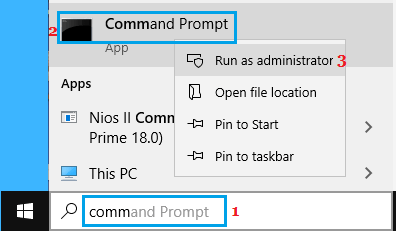
2. On the Command prompt screen, type sfc /scannow and press the Enter key on the keyboard of your computer.
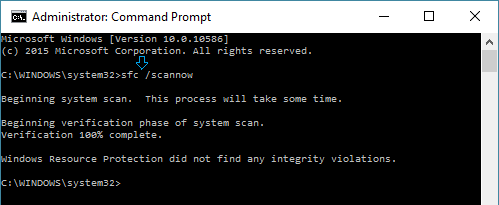
Note: There needs to be a space between sfc and /scannow.
3. Restart the computer to see if the problem is now fixed.